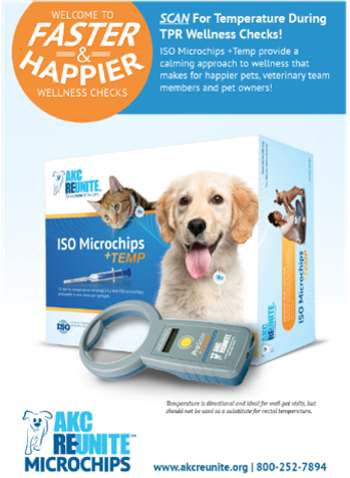
CVC Virginia Beach 2017: Osteosarcoma
This week at CVC Virginia Beach, Dr. Susan Ettinger outlined the prevalence, characteristics, diagnosis, and treatment of osteosarcoma in dogs.
Susan Ettinger, DVM, DACVIM (Oncology), discussed osteosarcoma diagnosis and treatment at the Central Veterinary Conference in Virginia Beach 2017. Here’s what you need to know:
- Osteosarcoma is the most common bone cancer in dogs.
- In a large- or giant-breed dog, lameness and swelling at a long-bone metaphysis “is osteosarcoma until proven otherwise.” Obtain radiographs as soon as possible.
- Osteosarcoma is highly aggressive locally and readily metastasizes. Treatment is both local and systemic.
- Adding chemotherapy to local treatment significantly increases survival time.
- Although the idea of amputation can be distressing to dog owners, most are pleased with their dog’s quality of life afterward. Most dogs also tolerate chemotherapy well.
Characteristics of Osteosarcoma
Osteosarcoma accounts for 85% of bone cancers in dogs and 5% of all canine cancers overall. Although only 10% to 15% of dogs with osteosarcoma have identifiable metastases at the time of diagnosis, 90% die from metastasis within a year unless they receive systemic treatment (chemotherapy).
Most dogs with osteosarcoma are middle-aged or older; a smaller incidence peak occurs at 1.5 to 2 years of age. Appendicular osteosarcoma is most common in large dogs (size is a more important factor than breed). Axial osteosarcoma occurs in dogs of all sizes. The disease may have a genetic component. Other risk factors are fracture history, bone implants, and radiation treatment.
The most common locations for appendicular osteosarcoma are long-bone metaphyses. Axial osteosarcoma, which is less prevalent than appendicular, most often occurs in the mandible and maxilla.
Diagnosis
On radiographs, osteosarcoma appears osteolytic and/or osteoblastic. It does not cross the joint but can affect adjacent bones. Fungal osteomyelitis has a similar appearance.
Bone cytology (obtained using an 18-gauge needle with the patient under anesthesia) can support the diagnosis of osteosarcoma, although it is not definitive. Alkaline phosphatase bone staining can differentiate osteosarcoma from other bone cancers. Bone biopsy (with a Jamshidi needle) is not required if the presentation is classic, said Dr. Ettinger, but is recommended if the cytology is not diagnostic or the presentation is not typical.
Screening for metastasis is mandatory before amputation, she said. This includes 3-view chest radiographs, aspiration of local lymph nodes, and careful orthopedic examination for bone metastases. Abdominal ultrasound is not necessary in most cases but is indicated if blood tests reveal abnormalities or if the presentation is atypical. For example, a lesion in a long-bone diaphysis (rather than metaphysis) may be a metastasis, not a primary tumor.
Treatment
Treatment involves both local and systemic therapy. Local treatment is palliative, intended to alleviate pain. Systemic treatment, intended to control metastatic disease, improves survival time. Dr. Ettinger recommends discussing the options with owners; some may choose palliative treatment alone.
Local Treatment
Amputation, the standard palliative treatment, “is one of the hardest things that pet owners are forced to do,” said Dr. Ettinger. It may help to let them know that most owners say they would choose amputation again, she remarked. She suggested directing owners to internet videos of three-legged dogs performing normal activities. Because the appearance of the surgical site (with its large shaved area) can be startling, she advised having owners bring a T-shirt for their dog to wear after surgery.
Limb-sparing surgery or radiation treatment can be performed if amputation is not an option. Stereotactic radiation (precise high-dose radiation treatment) typically has few adverse effects and is usually completed in 3 treatments, she said.
Systemic Treatment
Chemotherapy, usually with carboplatin or a combination of drugs, can begin as soon as the surgical incision has healed. “Chemo improves disease-free interval and survival time,” said Dr. Ettinger. “This is one of the cancers where I can definitively tell you chemotherapy makes a positive impact.”
Dr. Ettinger briefly discussed immunotherapy with an osteosarcoma vaccine that is currently in development. In a preliminary study, dogs receiving the vaccine in addition to amputation and carboplatin had a dramatically longer median disease-free interval and median survival time than dogs receiving only amputation and carboplatin.
Pain control is a priority for patients with osteosarcoma, said Dr. Ettinger. Options include nonsteroidal anti-inflammatory drugs, tramadol, gabapentin, and possibly bisphosphonates. Palliative radiation can reduce pain in dogs that have not undergone amputation.
Prognosis
For appendicular osteosarcoma treated with amputation alone, the median survival time is 4 to 5 months, 10% of dogs survive to 1 year, and 2% survive to 2 years. Adding chemotherapy increases median survival to 10 to 12 months, and 50% of dogs survive to 1 year (15% to 20% survive to 2 years). For axial osteosarcoma, survival is longer if the tumor is in the mandible but shorter if it is in a rib.
Negative prognostic factors are metastatic disease, young age, large tumor size, location in the proximal humerus, high serum alkaline phosphatase, and high histologic grade. Median survival is only about 2 months if metastases are present at the time of diagnosis, said Dr. Ettinger.
Osteosarcoma is treatable, concluded Dr. Ettinger, but it requires compassion toward owners because of its aggressive nature and radical treatment (amputation).
Dr. Laurie Anne Walden received her doctorate in veterinary medicine from North Carolina State University. After an internship in small animal medicine and surgery at Auburn University, she returned to North Carolina, where she has been in small animal primary care practice for over 20 years. Dr. Walden is also a board-certified editor in the life sciences and owner of Walden Medical Writing, LLC. She works as a full-time freelance medical writer and editor and continues to see patients a few days each month.
Newsletter
From exam room tips to practice management insights, get trusted veterinary news delivered straight to your inbox—subscribe to dvm360.





